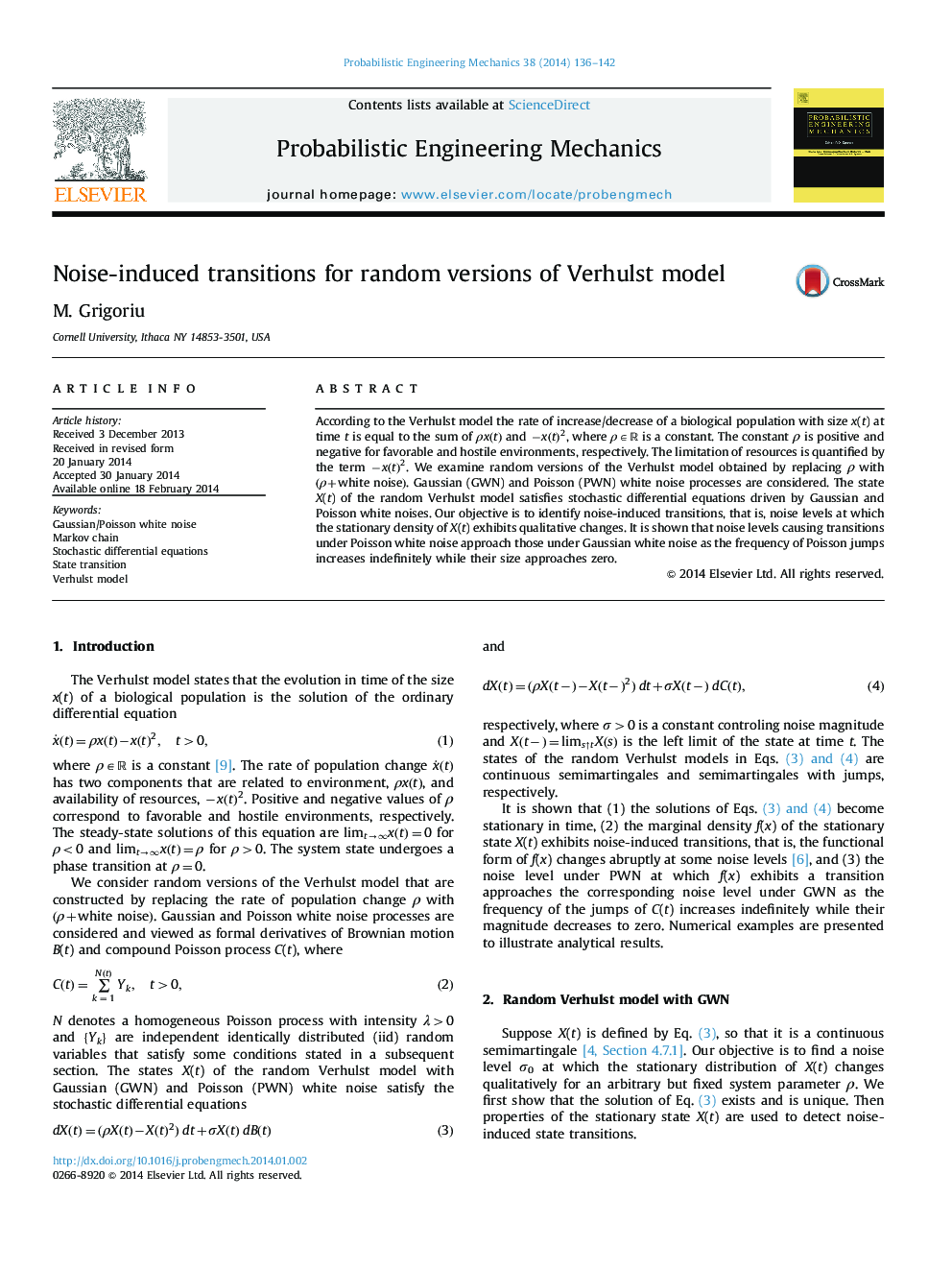| کد مقاله | کد نشریه | سال انتشار | مقاله انگلیسی | نسخه تمام متن |
|---|---|---|---|---|
| 804220 | 1467871 | 2014 | 7 صفحه PDF | دانلود رایگان |

According to the Verhulst model the rate of increase/decrease of a biological population with size x(t) at time t is equal to the sum of ρx(t)ρx(t) and −x(t)2−x(t)2, where ρ∈Rρ∈R is a constant. The constant ρ is positive and negative for favorable and hostile environments, respectively. The limitation of resources is quantified by the term −x(t)2−x(t)2. We examine random versions of the Verhulst model obtained by replacing ρ with (ρ+whitenoise). Gaussian (GWN) and Poisson (PWN) white noise processes are considered. The state X(t) of the random Verhulst model satisfies stochastic differential equations driven by Gaussian and Poisson white noises. Our objective is to identify noise-induced transitions, that is, noise levels at which the stationary density of X(t) exhibits qualitative changes. It is shown that noise levels causing transitions under Poisson white noise approach those under Gaussian white noise as the frequency of Poisson jumps increases indefinitely while their size approaches zero.
Journal: Probabilistic Engineering Mechanics - Volume 38, October 2014, Pages 136–142